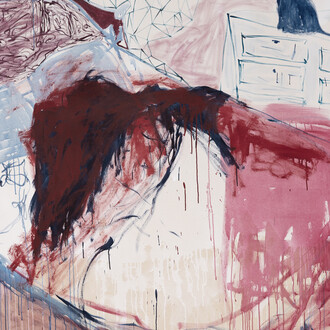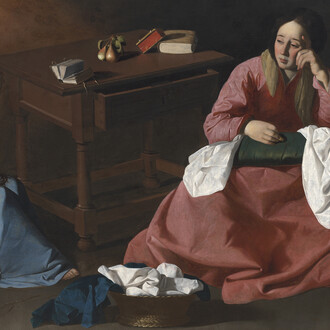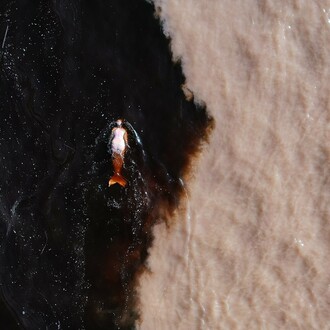Opera Gallery in London is pleased to present La France de Bernard Buffet, the largest solo exhibition dedicated to the renowned French figurative painter Bernard Buffet (1928-1999) in London in over 50 years. Timed to Frieze week, the exhibition will feature more than 20 rarely seen paintings created between 1951-1998. It explores the artist’s relationship with his native France and will run from 3 October - 2 November 2025.
During the 1950s, Bernard Buffet enjoyed worldwide popularity for his expressive figuration, capturing French sensibility post-war and becoming a leading artist of his time. By the end of this decade, notoriety affected his artistic appeal with critics. In the context of his dramatic relationship to French society the exhibition follows the artist’s deep relationship to the places and customs of his native France. Presented in three sections: Landscapes, Cityscapes and Seascapes, the exhibition will provide a visual compendium of Buffet’s unique relationship with France and his lifelong love of his mother country.
“Buffet’s oeuvre is still relevant today,” said the exhibition’s co-curator, Nicholas Foulkes—an esteemed expert on both Bernard Buffet and luxury, who has been a journalist for nearly 40 years and authored the 2016 biography Bernard Buffet: The invention of the modern mega-artist. He added, “Few people can see beyond Bernard Buffet’s signature. I very much hope that, with this comprehensive exhibition showcasing a variety of his works depicting his beloved France, a wider public will come to appreciate the diversity and technical brilliance of an artist who remains controversial to this day.”
Imbued with a sense of existentialism and stark realism, the exhibition pays homage to the artist’s interpretation of both the physical and emotional landscape of post-war France. Buffet once remarked of his paintings, “I do not try to reproduce the world, but to recreate it in a manner that is more true to my own.” Buffet’s view of France was significantly shaped by the experience of living through the Second World War during his formative years in Paris, a perspective that would go on to inform the post-war existentialism that his work came to be emblematic of, alongside his rise and fall with the French elites.
The cosmopolitan backdrop of the Paris provided endless inspiration, and the significance of the city’s influence is reflected in his works. In Place des Vosges (1960), Buffet captures one of the oldest squares in Paris - and the location where he began his formal art career - with architectural rigidity and his sharp linear style. In this painting he both celebrates and critiques the city’s imposing and often isolating environment. Buffet also encountered a diverse array of figures and characters as he moved among Parisian society during his relationship with Pierre Bergé. In Bigoudi (1951), he depicts the eponymous figure he first encountered at Madame Arthur, a well-known cabaret club in Paris.
Although Buffet was born in Paris, he often found refuge and inspiration by the sea. Ile de Port-Cros (1953) depicts a view of the sea from the small island of Port-Cros off the southern coast of France, rendered in a muted a colour palette dominated shades of blue and grey.
Throughout his life, he owned many impressive estates across France. His last home, the sprawling Domaine de la Baume, situated near the Provençal village of Tourtour, inspired some of his celebrated late career work, including the painting La Baume, les iris, la maison, les genêts (1997). It was here that Buffet painted his final works before his death in 1999.
“We invite audiences to rediscover Buffet through the lens of France—a country that was both his muse and mirror. This enduring theme allows us to explore how his art evolved alongside shifting notions of national identity, cultural symbolism, and the landscapes that defined his vision.” said Giulia Lecchini, Deputy Director of Opera Gallery in London.
La France de Bernard Buffet traces Buffet’s enduring artistic dialogue with his mother country and its landscapes, its traditions, and its cultural symbols that continues to resonate today.
















